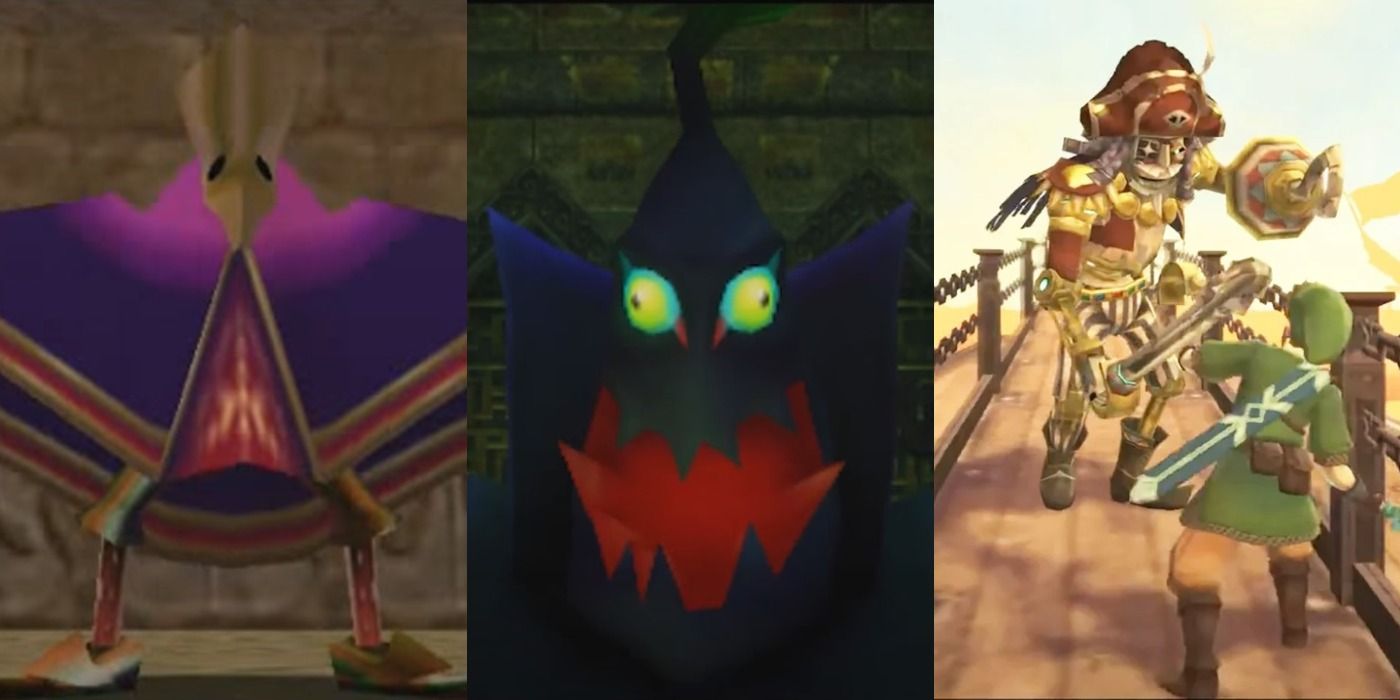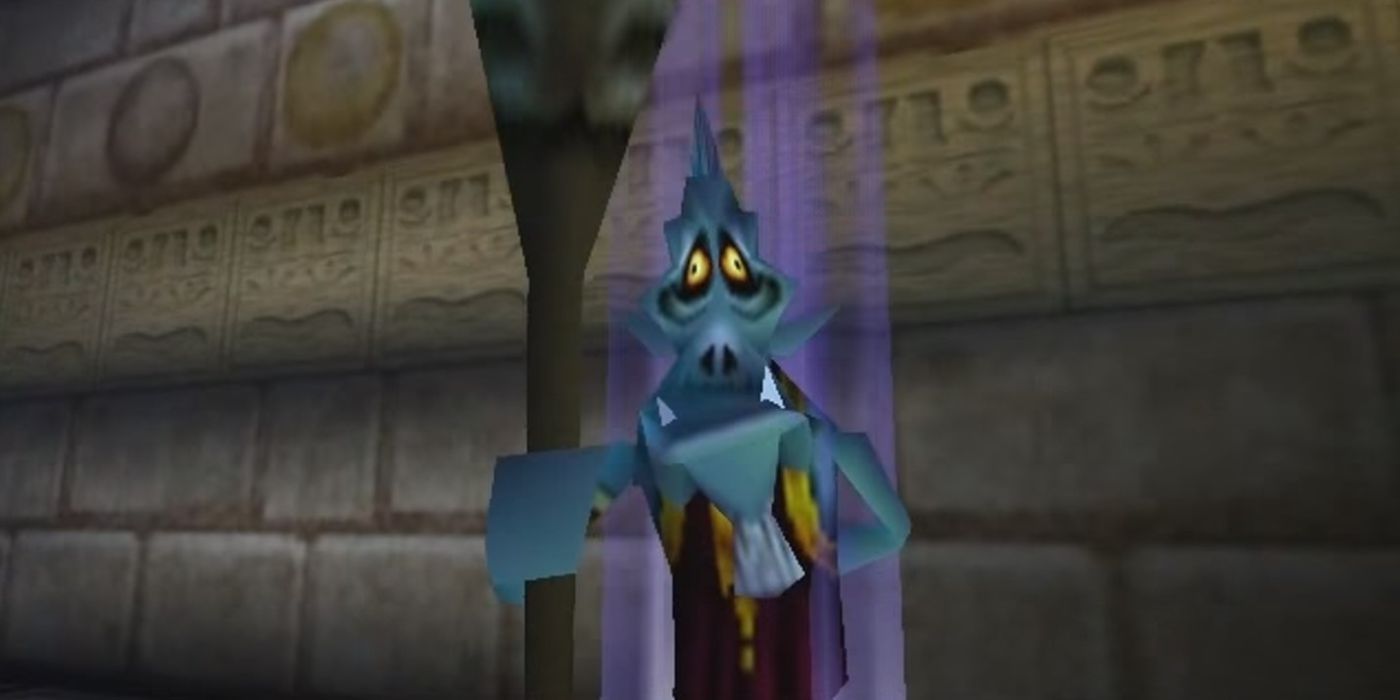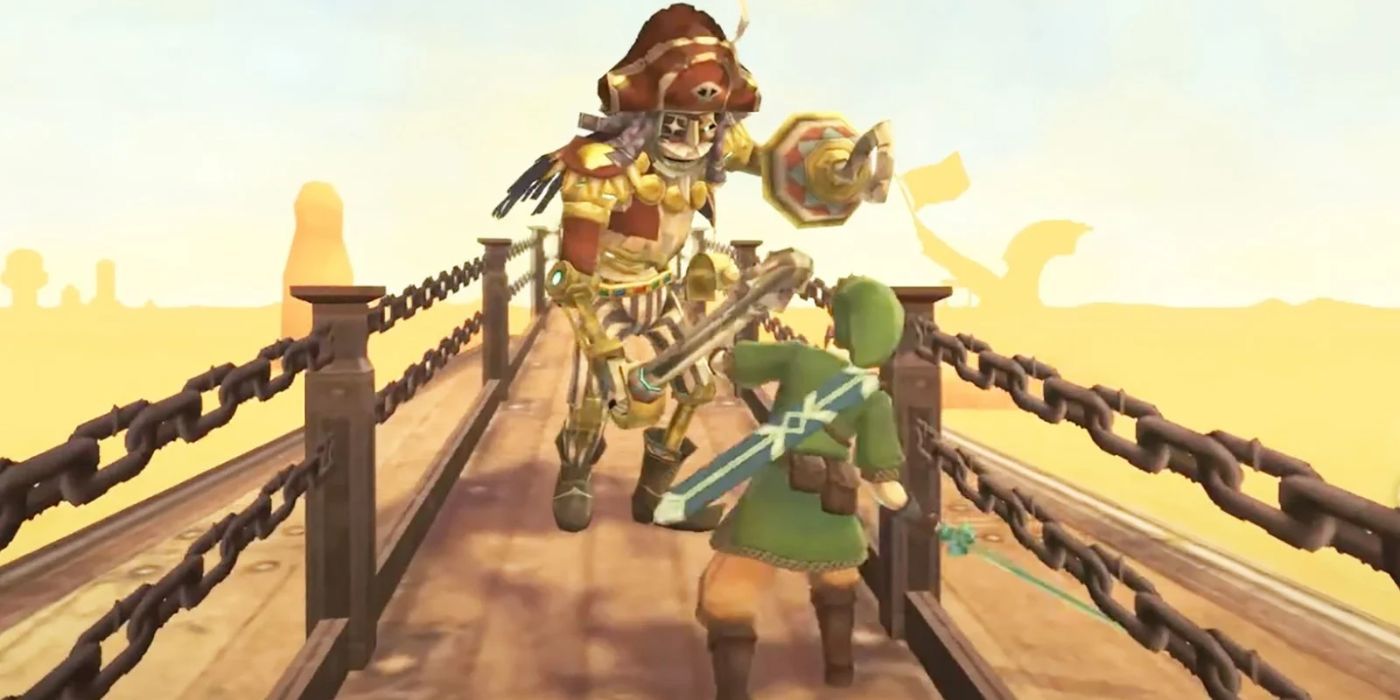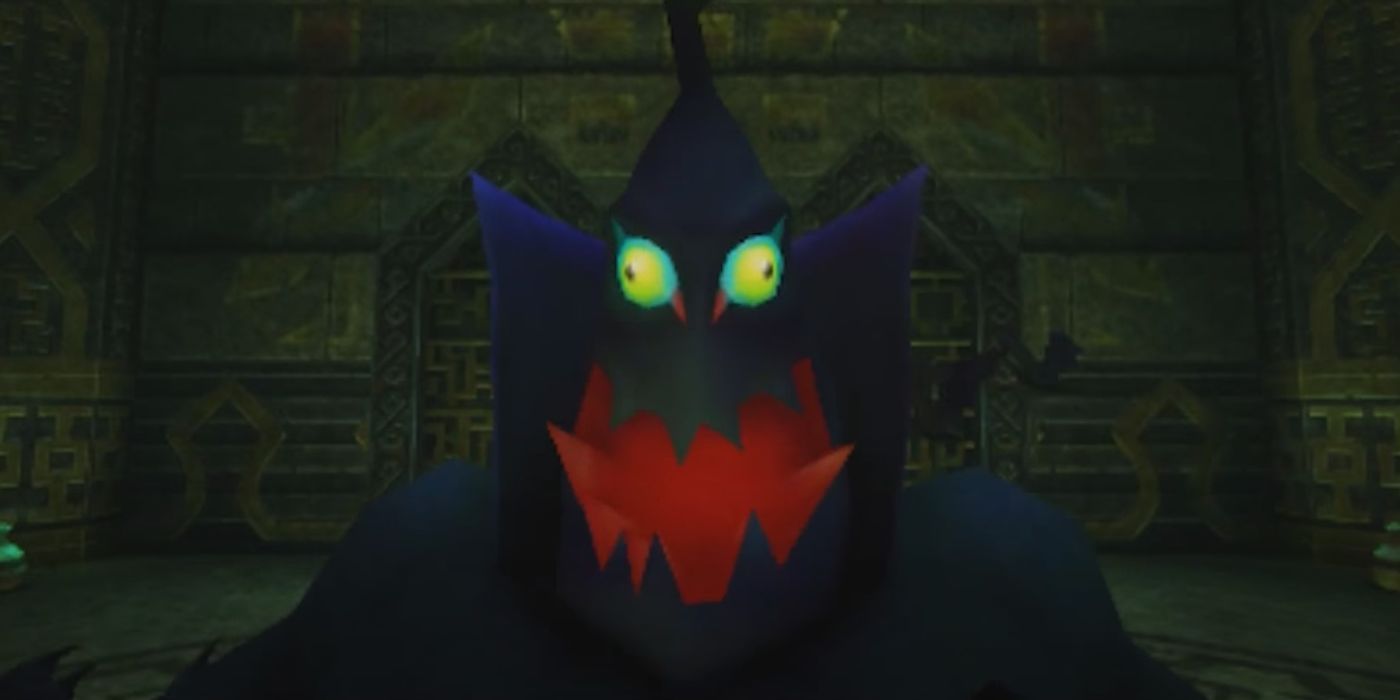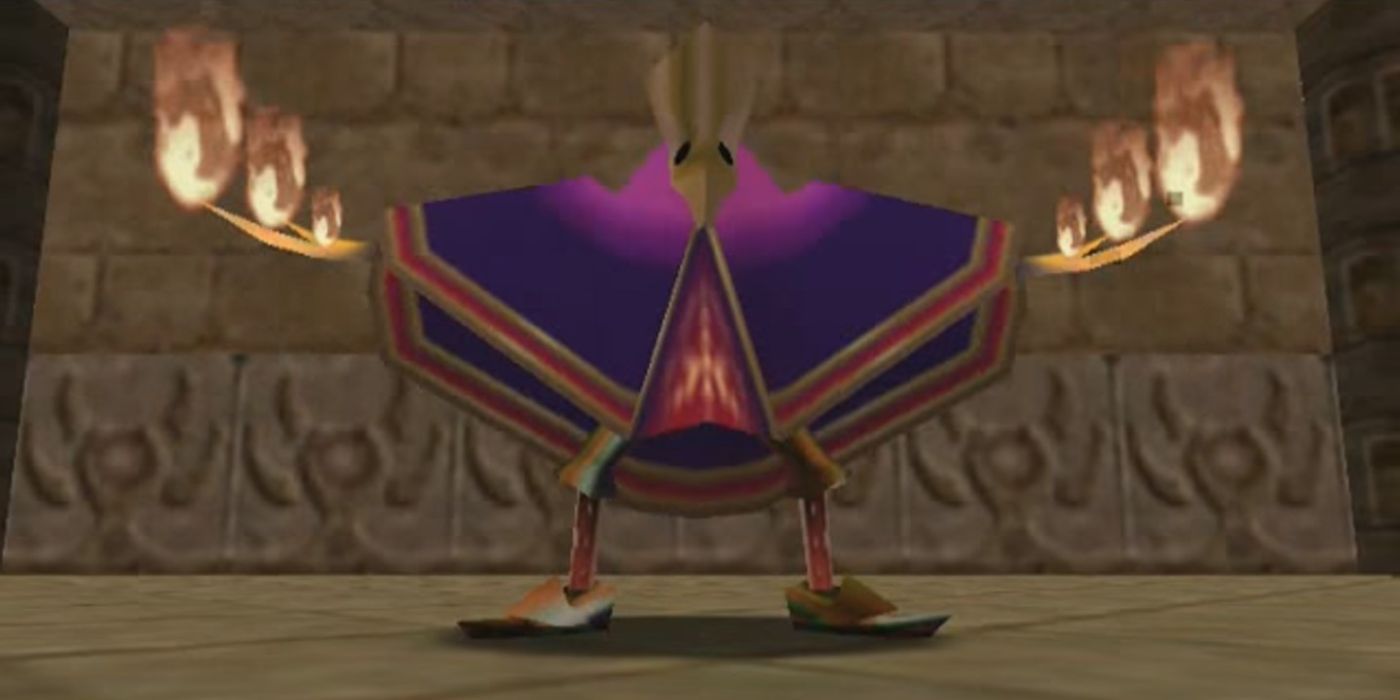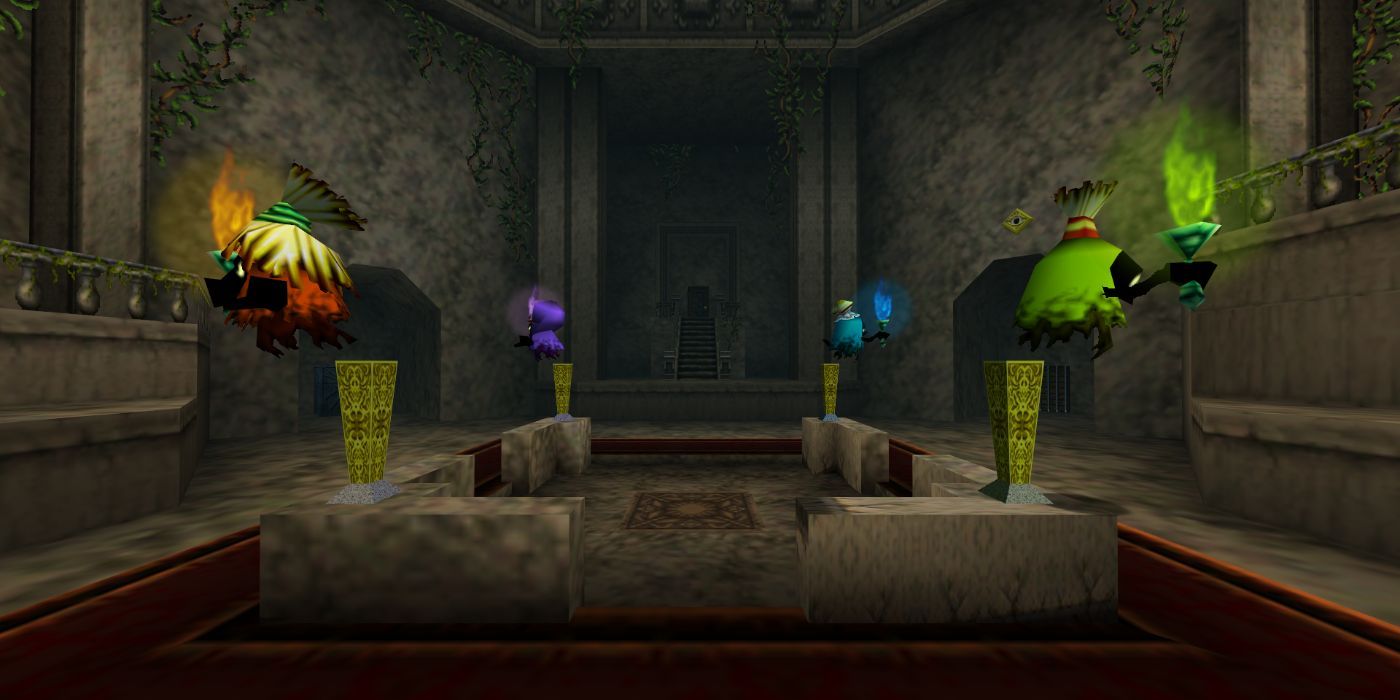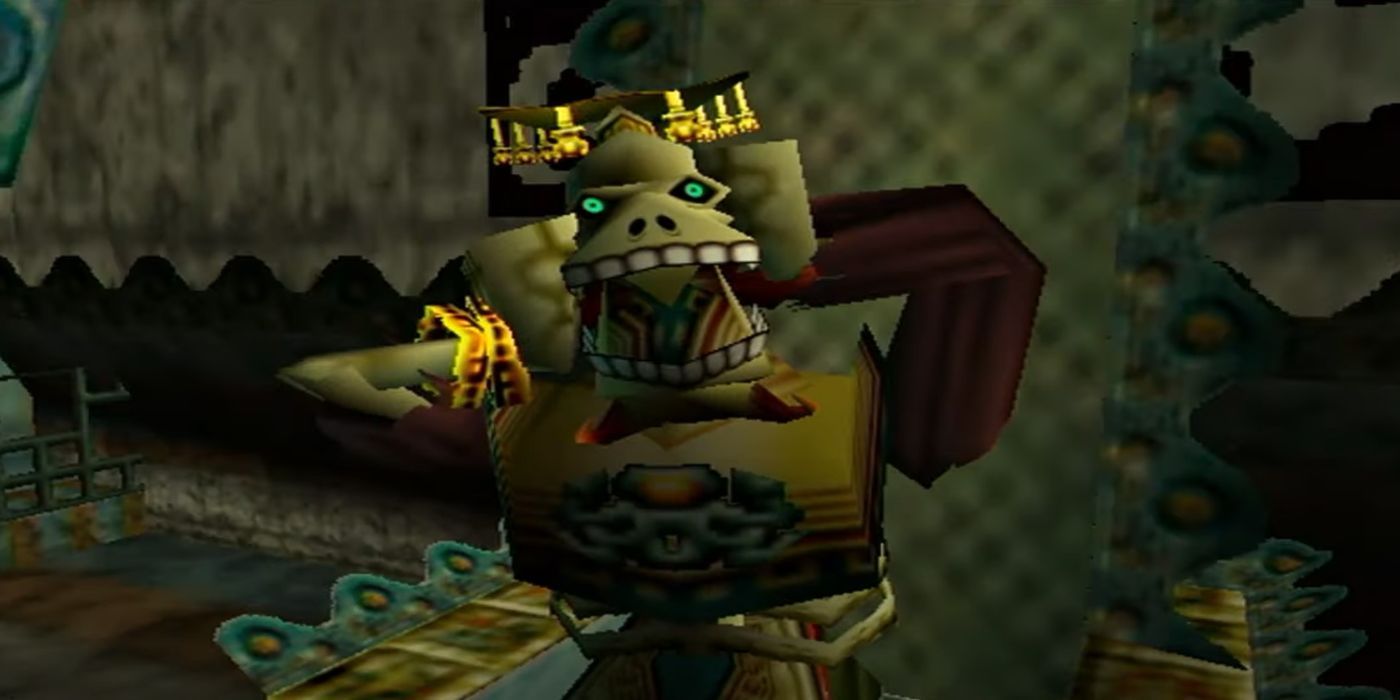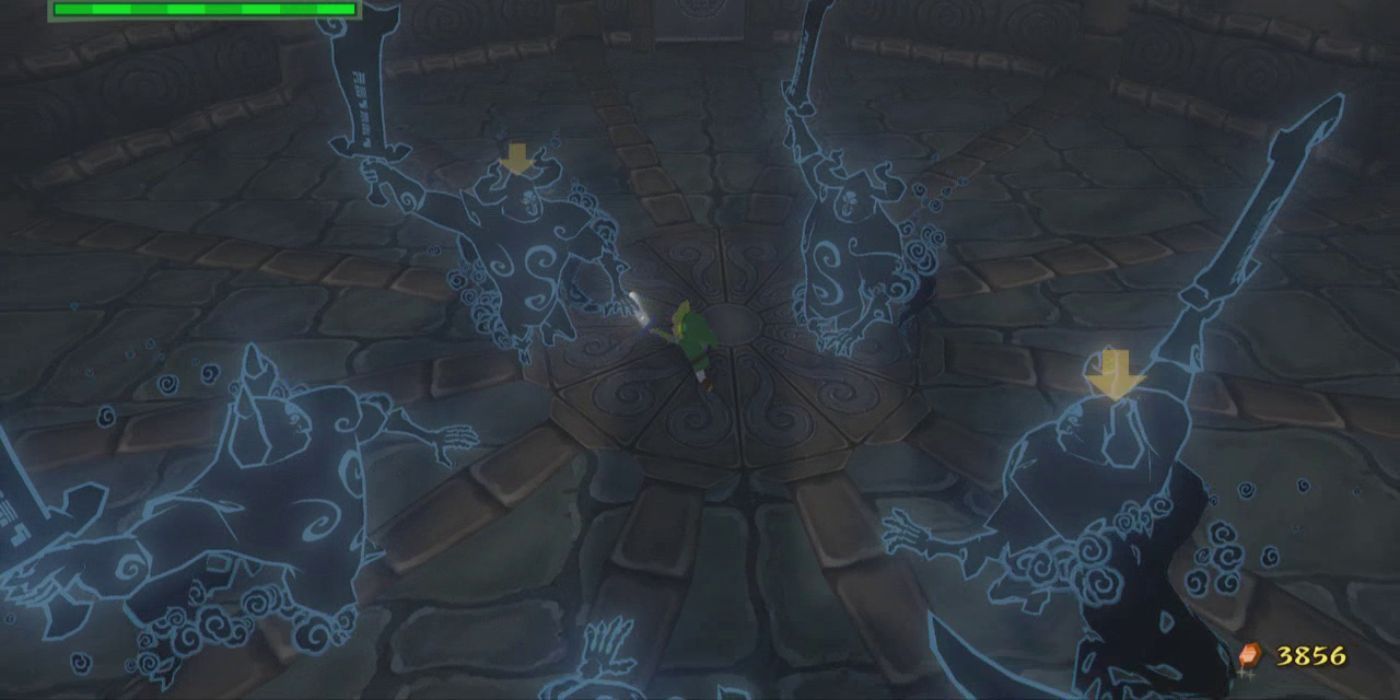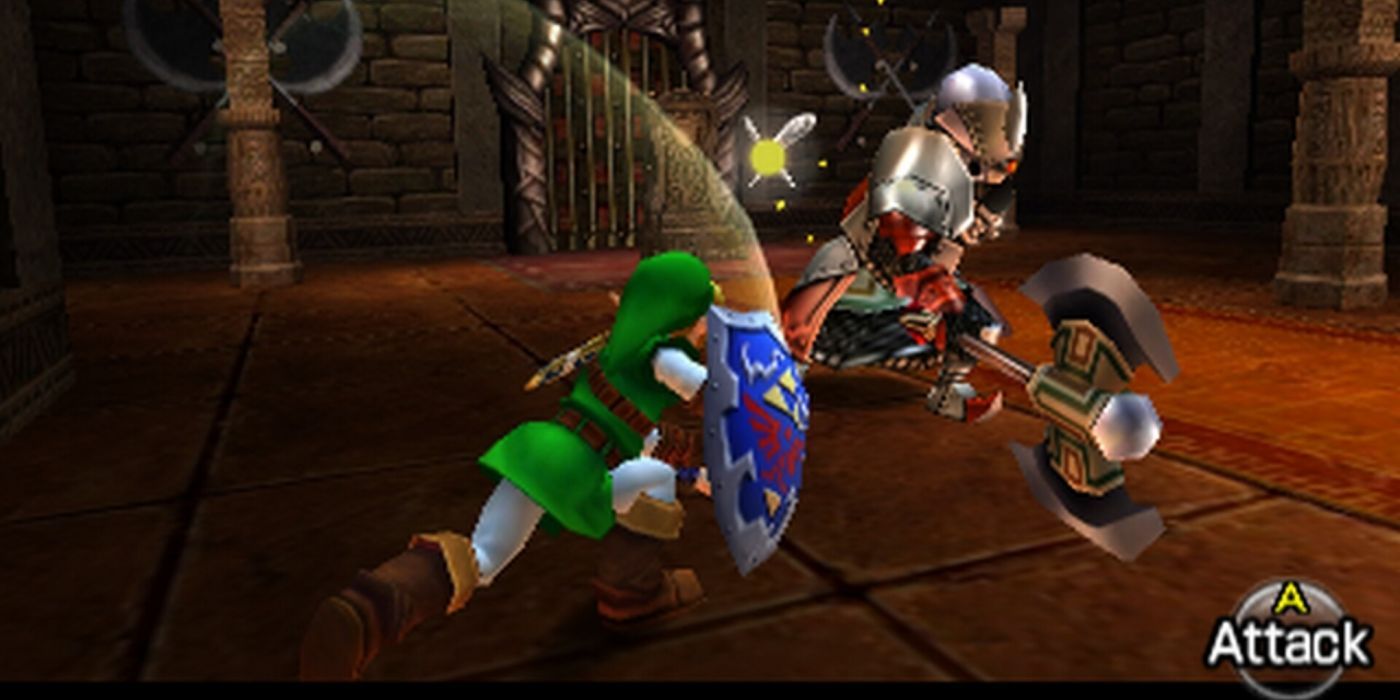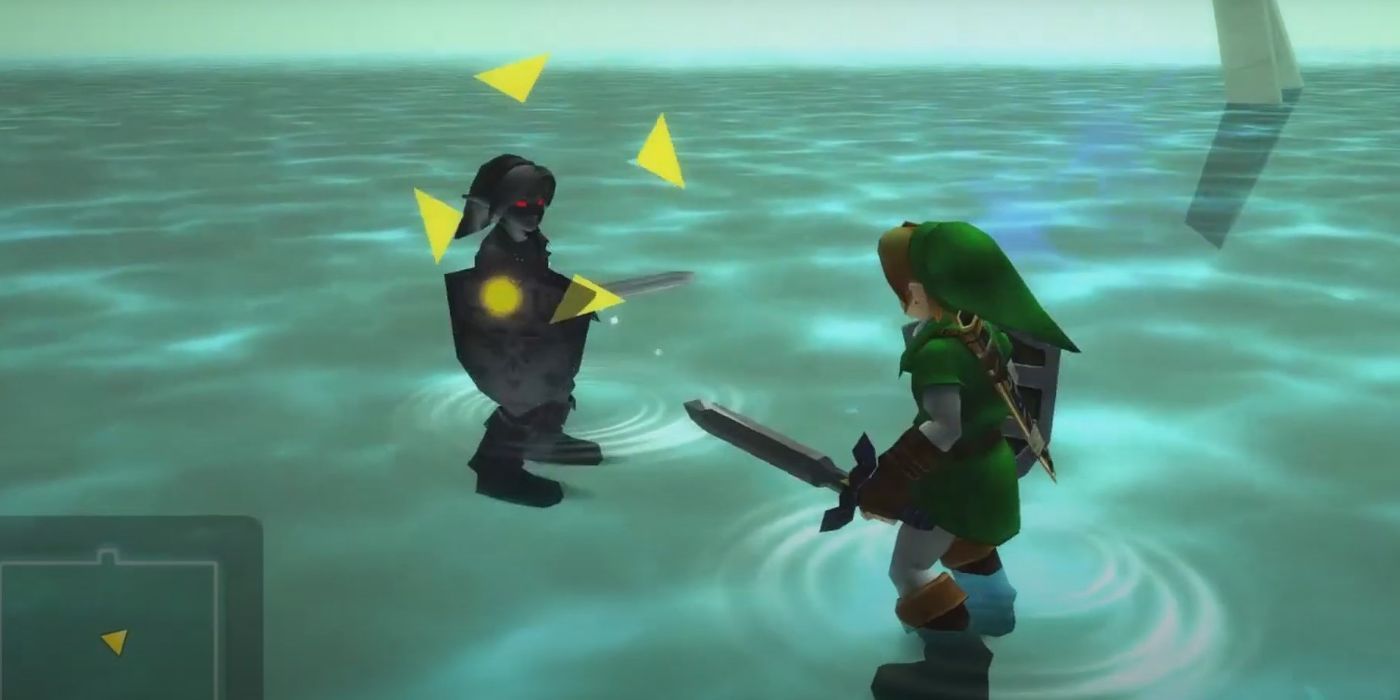inIn a franchise characterized by industry-defining boss design, it's too often that the minibosses in The Legend of Zelda series go without the recognition they deserve. These enemies are typically encountered in the midst of a dungeon guarding valuable items, and in the Zelda series, they often reappear later in the game with stronger abilities.
While they usually do not have the difficulty or mechanical nuance of the series' true bosses, these minibosses often feature unique dynamics that make them formidable challenges and meaningful additions to the game. There's staggering variety among such encounters in the Zelda franchise, but several stand out as exceptional examples of design that feel like fully-realized boss fights themselves.
Wizzrobe (Majora's Mask)
The third chronological miniboss of Majora's Mask, Wizzrobe presents a fresh take on the classic boss mechanic of creating illusory copies of themselves. Teleporter pads sit in each of the miniboss arena's four corners, and Wizzrobe uses these to move across the room between attacks. While his first stage gives players an overly generous amount of time in which to land an attack, this blue wizard's second phase becomes more challenging as he summons phantoms that appear on and dash between the teleporters. Link must identify the correct Wizzrobe and land a hit before being struck by an ice attack that reduces his health by half a heart, a substantial penalty so early in the game. This enemy appears three times in Majora's Mask, each time adding new patterns of movement and increased difficulty in discerning which Wizzrobe is real.
LD-002G "Captain" Scervo (Skyward Sword)
This swashbuckling miniboss is encountered in Skyward Sword's Sandship, one of the most underrated dungeons in the Zelda series. Unlike most other minibosses in the franchise, LD-002G is fought in a very confined space. With no room to run or use alternate items, Link must rely purely on swordsmanship to overcome this scallywag. The battle is brilliantly crafted as a fencing match, and players must parry and riposte with finesse while keeping a close distance with the mechanical Captain Scervo across three bouts. Add a bit of classic Nintendo humor to this miniboss's name (a portmanteau of the robotics term "servo" and a severe vitamin C deficiency frequently associated with pirates, "scurvy"), and this foe handily ranks among the most memorable in the franchise.
Gomess (Majora's Mask)
The final miniboss of Ikana Canyon, Gomess represents one of several minibosses in Majora's Mask that feel as challenging and fully realized as true boss fights. This wraith cloaks its vulnerable glowing core with large bats, rendering it invincible until Link shoots it with a light arrow.
The most dynamic part of encounter is the potential for players to become jinxed when struck by the swarm of bats. The status effect is unique to this miniboss, and in this state, Link is unable to draw his sword, so he must rely on alternate items to deal damage. In addition to being one of the best minibosses in the franchise, Gomess is visually unique with an arresting and cartoonish design that looks like it would be at home in the Nightmare Before Christmas-inspired segments of Kingdom Hearts.
Garo Master (Majora’s Mask)
Nimble and unpredictable, the Garo Master represents one of the greatest combat challenges in Majora's Mask. The Garo are ghosts of spies who died on a mission to invade Ikana Canyon and appear only when players are wearing the Garo Mask. Their leader, the elaborately attired Garo Master, challenges Link within the Stone Tower Temple and features a set of attacks similar to his underlings but that hit harder, faster, and with greater range. Depending on whether or not players have acquired the Garo Mask before forging Ikana Canyon's dungeon, the Garo Master can also be the first time players encounter these warriors' lethal skillset, making him all the more difficult a foe. Upon defeat, the Garo Master reveals the secret to the temple's core puzzle mechanic, which cleverly inverts the dungeon. This memorable miniboss can also be refought in the Secret Shrine during one of the best side quests in Majora's Mask.
Poe Sisters (Ocarina Of Time)
The Poe Sisters bear the rare distinction among Zelda minibosses of meaningfully impacting that design of a dungeon. Upon entering the Forest Temple, these specters will steal the magical fire that powers the lift to the dungeon’s boss: Phantom Ganon, one of the hardest bosses in the Zelda franchise. These ghosts, like other poes, can turn temporarily invisible and pass through walls, requiring players to keep their guard up lest they fall victim to an attack from behind, above or below.
The designs of each of the Poe Sisters reflect the color schemes of the four dungeons that Link must navigate in his quest across Hyrule as an adult. Although these minibosses feature some copy-and-paste engagement mechanics, the subtle brilliance of their design and impact on the dungeon's narrative make them one of the most memorable encounters in Ocarina of Time and the franchise as a whole.
Igos Du Ikana (Majora's Mask)
Like the Poe Sisters, Igos du Ikana is expertly woven into the lore-driven story of Ikana Canyon. The long-dead King of Ikana first watches from his throne as Link battles with his lackeys, kicking players away if they get too close. Once players defeat his minions, Igos du Ikana himself descends into the fight.
Though his fight mechanics remain largely the same as his predecessors, the king gains the unique ability to detach his skull, which flies around the arena attacking in tandem with his body. It's a surprising and challenging encounter that recalls the best classic Zelda bosses, such as Gleeok the multi-headed dragon.
Phantom Ganon (Wind Waker)
The central mechanic of this fight is one of the Legend of Zelda series' best, requiring players to return volleys of magical energy with Phantom Ganon like a game of enchanted badminton. The second encounter in Ganon's Tower requires players to fend off multiple copies of this ghostly foe within a dungeon maze. Eventually, players will find the light arrows, arguably one of the most useful items in the Legend of Zelda franchise, and be cornered into a final confrontation with Phantom Ganon. Here, a single light arrow banishes the specter, effectively demonstrating the strength of this magical and plot-relevant item. It’s an exceptionally well-crafted moment, a culmination of prior encounters that gives players the confidence to tackle the remainder of the game’s final level.
Gerudo Iron Knuckle (Ocarina Of Time)
Typically in the Legend of Zelda games, minibosses are placed at or near the structural midpoint of a given dungeon. Not so with the Gerudo Iron Knuckle, who appears immediately before the boss battle with Twinrova. Mechanically, the fight is identical to skirmishes against prior Iron Knuckles with the exception of the Gerudo variant being generally faster and stronger. This miniboss also has the rare quality of destroying parts of the arena, giving players increasingly limited places to hide.
The dramatic conclusion of this battle reveals that the Iron Knuckle is actually Link’s ally Nobooru trapped in cursed armor by the Twinrova Witches. It’s a dynamic and effective moment that uses the armor-shedding mechanics surrounding the Iron Knuckle enemy to articulate one of Ocarina of Time's only true narrative twists.
Dark Link (Ocarina Of Time)
Set in an ethereal void dominated by a dead tree in the Water Temple, the battle with Dark Link represents one of the most exciting fights in the series and easily ranks as the franchise's best miniboss encounter. A fan-favorite recurring miniboss, this fight pits players against Link's shadowy doppelganger and features numerous exceptional design nuances, such as the disappearance of Link's shadow during the battle.
The skirmish is as refreshing as it is challenging because, despite The Legend of Zelda’s reputation for being a “sword and shield” fantasy game, there are precious few battles in Ocarina of Time that require Link to fight other swordsmen. Conceptually, it is also a masterful depiction of Link's unconscious mind and his subtle internal conflict that underpins the game's narrative.

